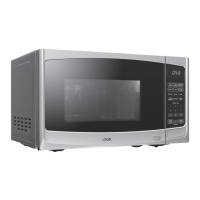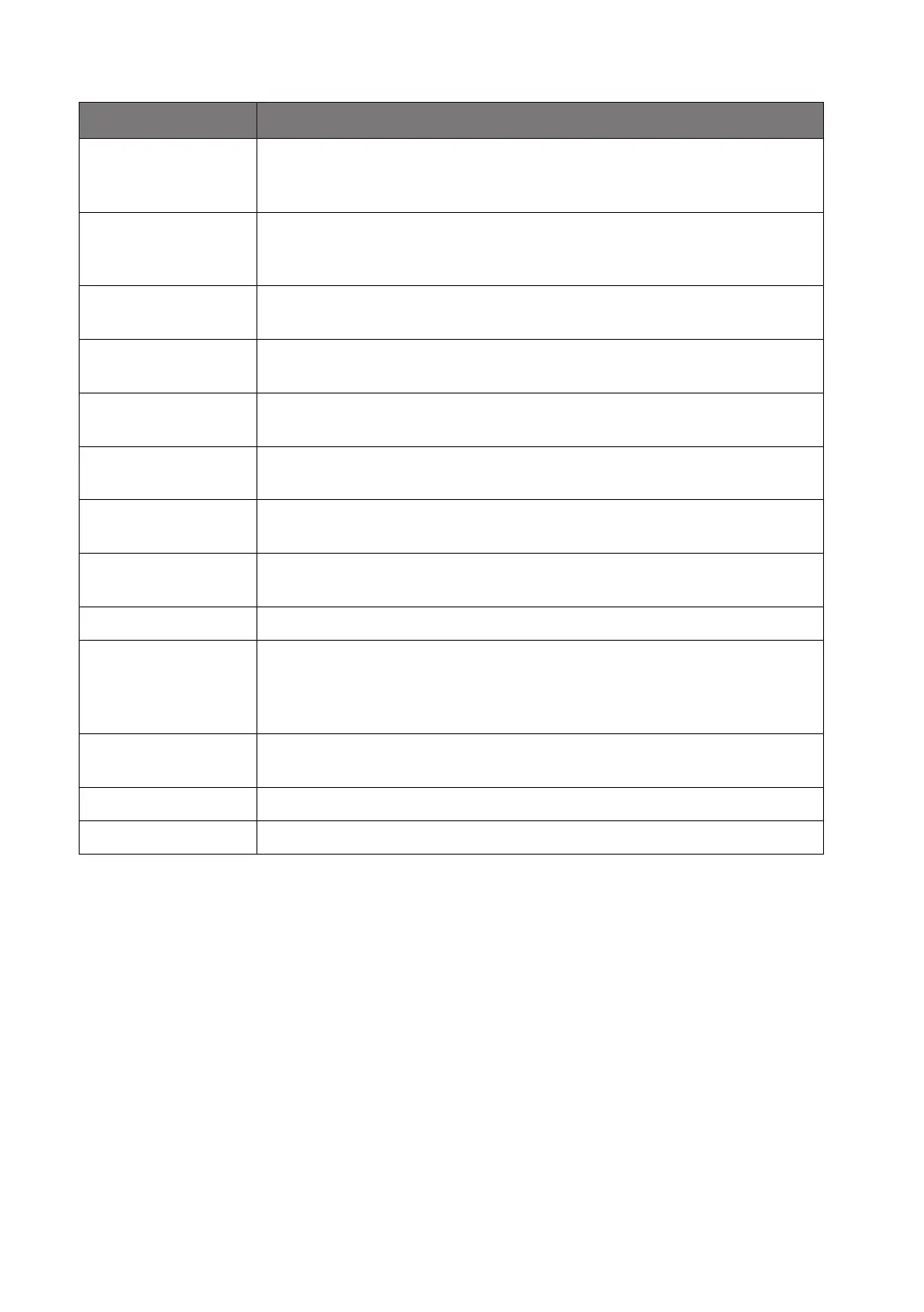13
Materials that can be Used in the Microwave
Utensils Remarks
Aluminium foil Shielding only. Small smooth pieces can be used to cover thin parts of meat or
poultry to prevent overcooking. Arcing can occur if the foil is too close to oven
walls. The foil should be at least 1 inch (2.5cm) away from oven walls.
Browning dish Follow the manufacturer’s instructions. The bottom of a browning dish must
be at least 3/16 inch (5mm) above the turntable. Incorrect usage may cause
the turntable to break.
Dinnerware Microwave-safe only. Follow the manufacturer’s instructions. Do not use
cracked or chipped dishes.
Glass jars Always remove lid. Use only to heat food until just warm. Most glass jars are
not heat-resistant and may break.
Glassware Heat-resistant oven glassware only. Make sure there is no metallic trim.
Do not use cracked or chipped dishes.
Oven cooking bags Follow the manufacturer’s instructions. Do not close with metal tie. Make slits
to allow steam to escape.
Paper plates and cups Use for short–term cooking/warming only. Do not leave oven unattended
while cooking.
Paper towels Use to cover food for reheating and absorbing fat. Use with supervision for
short-term cooking only.
Greaseproof paper Use as a cover to prevent splattering or a wrap for steaming.
Plastic Microwave-safe only. Follow the manufacturer’s instructions. Should be
labelled “Microwave Safe”. Some plastic containers soften, as the food inside
gets hot. “Boiling bags” and tightly closed plastic bags should be slit, pierced or
vented as directed by the instructions on their packaging.
Plastic wrap Microwave-safe only. Use to cover food during cooking to retain moisture.
Do not allow plastic wrap to touch food.
Thermometers Microwave-safe only (meat and candy thermometers).
Wax paper Use as a cover to prevent splattering and retain moisture.
L20MS14_IB_RC_Final131126.indd 13 26/11/2013 6:42 PM

